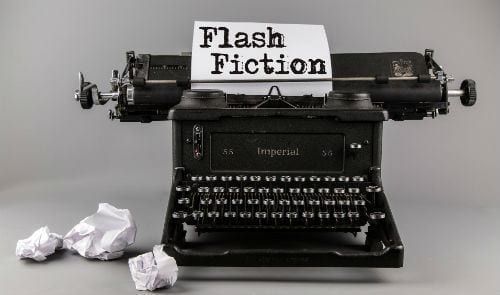by Taylor Hayes~
Source: “How Flash Fiction Took Over the Internet”
“It’s not the size of the word count in the story, it’s the size of the story in the word count” – Gayle Towell, Litreactor
Whether it’s a dribble, a drabble, a piece of microfiction, or a micro-story, flash fiction is an attractive alternative for anyone who enjoys creative writing but may not have enough time to write or read longer pieces.
Now that the 2018 Klio team is hard at work, we are excited to announce that we will be accepting flash fiction for our upcoming edition! We will consider submissions of flash fiction up to 1,000 words, and you can submit up to four pieces for this genre. If you’re interested in writing flash fiction yourself, here are some examples and tips you can follow.
What is Flash Fiction?
As flash fiction gains popularity in the literary world, there are a few general parameters followed by flash fiction authors. Gayle Towell, founding editor of Microfiction Monday Magazine and award winning fiction writer, describes flash fiction as, “a subset of fiction—those super short stories typically told in 1,000 words or less” (Towell). Drabbles are 100-word fiction pieces, dibbles are 50 words, and some authors even write six-word stories. Many publishers and writers use short stories and sudden fiction interchangeably to reference works of 500–750 words, while micro-fiction often refers to stories of fewer than 400 words. The general rule about writing flash fiction is the shorter the better.
Source “13 Paying Markets for Flash Fiction”
Flash fiction first rose to popularity through the internet and rise of social media. Because of its unique style and brevity, flash fiction keeps readers even with the shortest attention spans engaged. Depending on the piece, you can read a piece of flash fiction in under 5 minutes. In a digitalized age where people want their media in small bits, flash fiction has begun to gain traction with well-known literary magazines. Magazines like Guernica have added flash fiction to their regular content. While some magazines are solely devoted to publishing flash fiction like Smokelong Quarterly, Microfiction Monday Magazine, and Flash Fiction Online.
You can also find flash fiction in five locations on campus, including the library, thanks to the Penn State Short Edition project. Visitors to the dispensers can choose the length of their piece (1, 3, or 5 minutes each) which are printed directly from the kiosk. All the pieces are written by students, staff, or faculty and are reviewed by a student editorial board. These stories are easy to read while walking to class or on the bus. This fall, short story dispensers are planned to be installed at five branch campuses.
How to Write Flash Fiction
There are some general guidelines of what makes good flash fiction. While writing in this genre, it’s important to have precise sentences, create engaging characters, and use relatively simple themes/plots. The length is limited, so every word needs to matter.
An easy way to get started on writing is to start with a bigger storyline and then simplify it down to a specific scene or emotion. By doing this, you’ll be able to create a strong, memorable image that will resonate with the reader. Another helpful tip for writing flash fiction is to keep your cast of characters to one or two. You don’t have as much room to develop characters like you do in a longer piece, so the ones you include have to count.
For more advice on how to write flash fiction, Flash Fiction Online and Reflex Fiction offer comprehensive lists that include tips on how to write good flash fiction.
How Penn State Does Flash Fiction
Last fall, Penn State Harrisburg’s literary magazine, From the Fallout Shelter, published a special edition called Fission. Fission included various works of flash fiction and poetry. After browsing this special issue, two pieces caught my attention. “Roast Beef with Carrots Sliced Longways” and “Distance is Relative” both had intriguing titles along with interesting content, graphic imagery, and precise sentences.
Source: Fission
For University Park students, Kalliope is now accepting micro-fiction submissions for their special edition called FOLIO. The submission deadline for FOLIO is November 4th.
For Klio, we believe that accepting flash fiction opens the door for more submissions and attracts a new set of readers who are interested in writing or reading this new wave of fiction. Flash fiction is also a fresh way to broaden Klio’s fiction selection. If Klio accepts your flash fiction submissions, we might even feature your piece on our social media or newsletter, so get writing!
If you’re feeling inspired by this post, try writing flash fiction yourself and share a six word story below!


